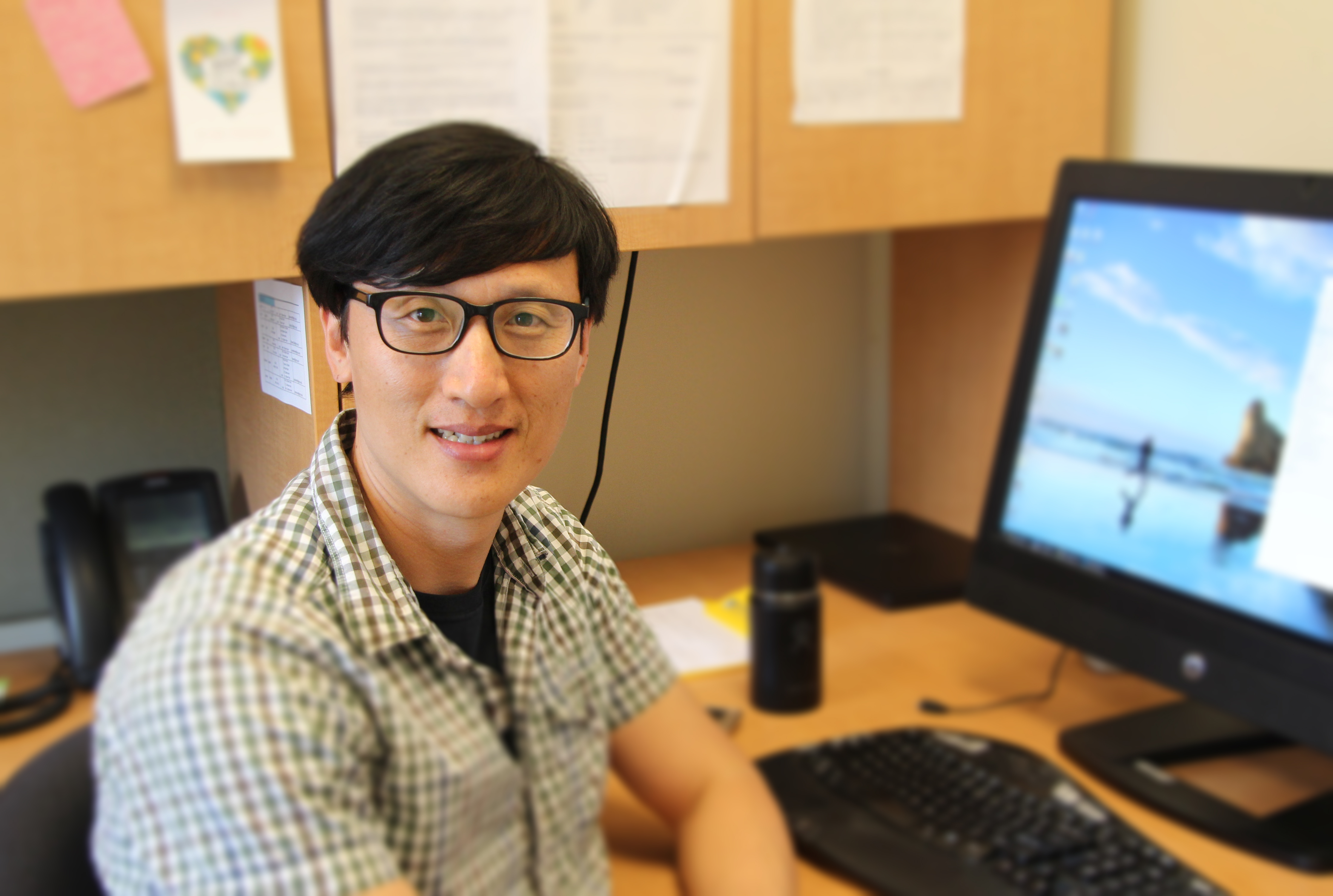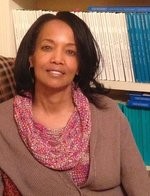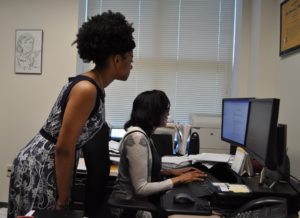As a long-time instructor in the Korean language Dae Yong Kim has faced his share of teaching challenges – early in his career at the Defense Language Institute English Language Center in Monterrey, Calif. and later, at a New York City high school. So, when he arrived on the Mason campus two years ago, he quickly settled into a more predictable routine. That, he thought, would change when he was asked to teach Korean not only to his students on the Mason campus, but also to students on the campus at James Madison University, a 4-VA partner school 116 miles to the southwest, via the 4-VA Telepresence Room.
Shared courses, like the one that Kim would go on to teach, are one of the pillars of the 4-VA partner institutions. “The ability to offer shared courses like Korean is an important goal for reducing faculty costs and expanding course opportunities for our students,” explains Mason’s 4-VA Campus Coordinator Janette Muir.
After getting a feel for the room and the dynamics, Kim realized he had to make some modifications in his teaching style and in the class materials. “I spent a lot of time thinking up how to change the classroom to make it interesting and challenging,” explains Kim.
the classroom to make it interesting and challenging,” explains Kim.
“I quickly recognized I had to make some changes in everything from the font size on my PowerPoint slides to how I engage my students, especially the ones at JMU,” said Kim. So Kim got to work, enlarging the font and minimizing the content on the slides.
His next step was to change his style, “You can’t do lecture style teaching in the Telepresence Room, I have to engage the class. I decided that I had to focus on the JMU students, because I’ve already got the attention of my students here. But they can’t spend one hour and 15 minutes staring at the monitor. Now, I do more group activities like have the students interview their peers and then we all analyze the interview as a class.”
Kim’s next hurdle was to figure out how to handle quizzes — the backbone of a language class, to ensure that students are retaining their vocabulary. But conducting such quizzes, fairly, 100+ miles away would be difficult. To overcome this, Kim gives each of the students at JMU different vocab tests and each choose their correct answers amongst responses provided. Once a student selects the right answer, they record it in a notebook. When they complete their notebook response sheet, the student takes a picture of page and emails it to Kim. Kim monitors his phone throughout the allotted quiz time to ensure that he has received each student’s quiz.
After concluding his first year in the Telepresence Room, teaching a class in the 2018 Fall Semester and the 2019 Spring Semester, Kim is impressed with the results.
“I honestly thought students would drop the class after one or two sessions, I thought they’d find it too difficult to follow,” says Kim. But the students proved him wrong. They all stayed engaged and worked hard throughout the course. What’s more, Kim reports, “As an experienced Korean teacher, I know what their proficiency level should be at the end of the semester and what they need to do to achieve that level. I was surprised to see that there was not a drop off in proficiency at all!”


 recognizes there is much to be understood about creating constructive introductions in the school setting. However, she is also keenly aware of a key flaw in the data used in the benchmark research – it is predominantly limited to students who are economically advantaged.
recognizes there is much to be understood about creating constructive introductions in the school setting. However, she is also keenly aware of a key flaw in the data used in the benchmark research – it is predominantly limited to students who are economically advantaged. Several months later, with that grant in hand, Garner identified an undergrad student, Tamera Toney, who was interested in the project and would be able to handle some of the data entry and management responsibilities. Toney worked on the project during her senior year at Mason. Garner saw that the 4-VA funding could provide a personal and professional pathway for Toney to enhance her studies. Toney recently graduated and will return in the fall to begin her master’s work in Psychology.
Several months later, with that grant in hand, Garner identified an undergrad student, Tamera Toney, who was interested in the project and would be able to handle some of the data entry and management responsibilities. Toney worked on the project during her senior year at Mason. Garner saw that the 4-VA funding could provide a personal and professional pathway for Toney to enhance her studies. Toney recently graduated and will return in the fall to begin her master’s work in Psychology.